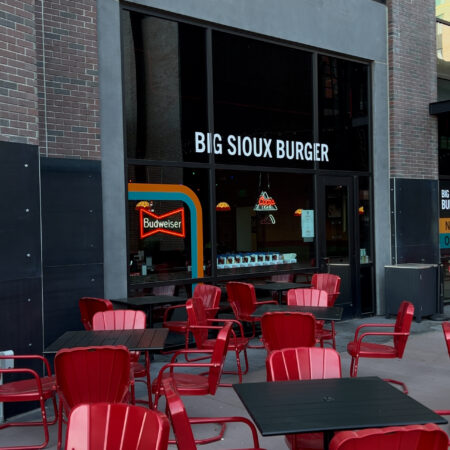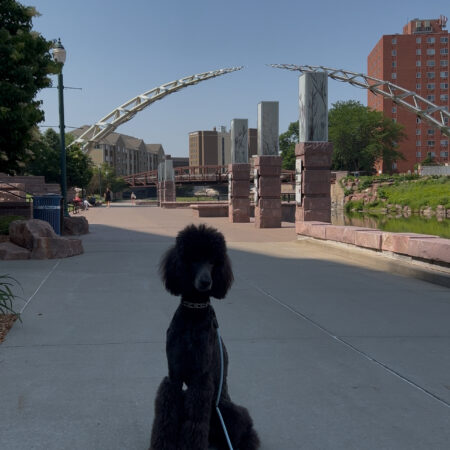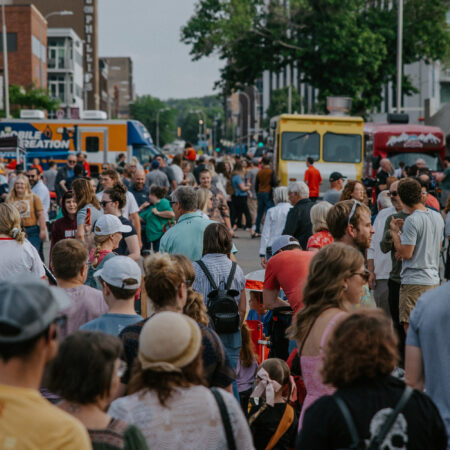A couple of months ago, I laid out what I believe to be Downtown Sioux Falls’ winning formula for transformation—arts and culture, great public spaces, and improved accessibility. Think of it like this…
- Accessibility: How many different ways can people get to downtown and navigate within it?
- Public Spaces: How many different places can people have quality social time with others?
- Arts and Culture: How many different unique opportunities are there for people to experience?
In one form or another, these are questions we hear all the time. How will we get there? Where will we go? What will we do?
I teased out improving accessibility last month by focusing on walkability—the most basic aspect of access. This month, I skip ahead to talk about arts and culture.
First, I want to touch upon a critical question. Why does art and culture matter? Two words: brain drain. We need to do a better job of keeping our youth here in Sioux Falls once they graduate high school. Urban economist and sociologist Richard Florida has led the narrative that nurturing the local creative scene is the best way to keep and attract a talented workforce. Not only will investing in the arts and culture help prevent the brain drain, it also serves as a recruitment tactic.
With the unprecedented development potential at the Sioux Steel site and the Railyard Redevelopment, downtown has never been so fertile for growing our arts and cultural offerings. We have a Levitt at the Falls that will enhance our music scene. We also have an opportunity to grow a culture for independent film when the State Theatre opens for business.
There’s one major problem, however. Funding. Opening cultural institutions is easy. Keeping them open is the hard part.
So, what have other cities done to develop the arts and culture, and what might Sioux Falls do?
Two great examples can be found in Denver and Salt Lake City. Both established funds to support the arts, among other things. In Denver, there is the Science and Cultural Facilities District—a privately run, publicly funded organization that draws 1/10th of a 1% sales and use tax. In Salt Lake City, it’s called ZAP—Zoo, Arts, and Parks. It’s a similar funding model for slightly different programs.
Of course, here in Sioux Falls we have our entertainment tax, which is collected on lodging, alcohol sales, dining, and ticket sales. The entertainment tax is used to fund operating and capital activities related to the operations of the Events Complex, Washington Pavilion, Orpheum Theatre, Sioux Falls Stadium and Great Plains Zoo.
As Sioux Falls grows, so too does the entertainment tax fund, with revenues increasing 2-4% each year. It’s probably not enough growth to support the operations of a world class museum, if one were to be developed in downtown. It could help support the State Theatre, however. This would be a boon for the downtown economy, creating a flywheel effect by garnering even more tax revenue for the entertainment fund.
This raises the question, how can the entertainment fund maximize its impact and how should it be operated? I believe the public-private model might serve Sioux Falls the best, as well as a dedicated focus on the arts.
So how else might Sioux Falls be able to expand our support for art and cultural offerings? Perhaps obvious an answer is a local arts endowment, which efforts are currently afoot at the Sioux Falls Area Community Foundation. SFACF has a matching gift through the end of 2018 for three non-profit organizations, including the Washington Pavilion. Perhaps this effort will expedite a trend to expand future philanthropic support for the arts.
Perhaps the most exciting opportunity though is the new federally endorsed funding mechanism known as Opportunity Zones. There are still many unknowns at this time and we won’t have a better idea of the parameters for South Dakota’s Opportunity Zones until our next governor is elected.
Here’s what we do know. Two Opportunity Zones have been established in Downtown Sioux Falls. A local bank will need to sponsor a fund for special projects to occur within those Opportunity Zones. Investors for projects in Opportunity Zones will receive very enticing tax breaks for years to come.
Some examples of Opportunity Zone projects in Minnesota include a tiny home village, a food truck park, and workforce housing. Using Minnesota’s approach, Opportunity Zones could be quite impactful for downtown. But why not expand the criteria to include arts and culture projects, such as an arts incubator or operations fund for cultural institutions?
It’s going to take some creative thinking to leverage these various funding mechanisms. This is our moonshot opportunity though. We cannot restrict ourselves in our thinking. Now is the time to define the city we wish to become.
Could that mean a world class museum? Perhaps. It worked for Bilboa, Spain, where the addition of the Guggenheim Museum—housed in a Frank Gehry signature piece of architecture—has brought about a roughly 2500% increase in tourists.
I’ve been told 80% of visitors to South Dakota arrive by driving either from the south on Interstate 29, or the east on Interstate 90. I don’t know if that’s true, but I do know that some 14 million visitors come to South Dakota every year, according to state data. One million are estimated to visit Falls Park. Doing the rough math, we have a lot of room for growth.
So knowing this, how much impact do you think a world class museum would have for downtown’s economy? Perhaps we honor our indigenous population by celebrating their heritage at museum with the pre-eminent collection of Native American art. The possibilities for such a facility are endless.
We must also keep an eye towards the future of art as well, being mindful of changing preferences towards art installations, such as Meow Wolf, which bucks the profitability trend for most cultural experiences.
Let’s dream big together. I encourage you all to envision the possibilities for the future of art and culture in Downtown Sioux Falls. I’d love to hear your thoughts on the topic too. Call (605-338-4009) or email (joe@dtsf.com) me with your ideas.
Sincerely,  Joe Batcheller Joe BatchellerDTSF President |



